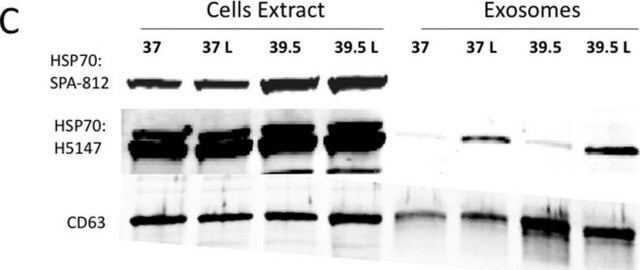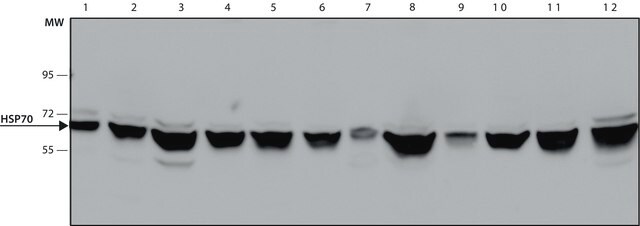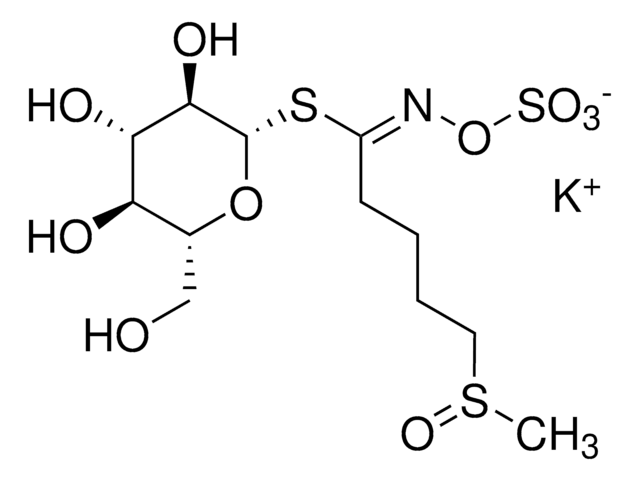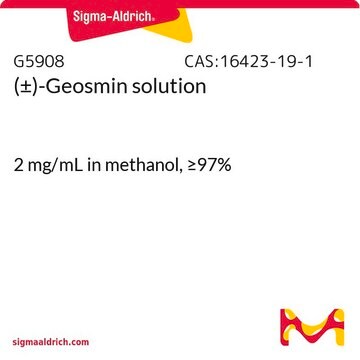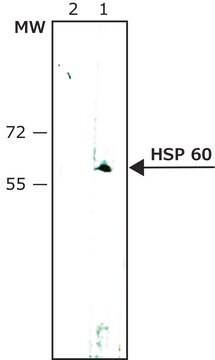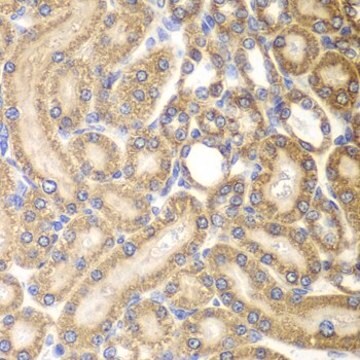Kluczowe dokumenty
H3524
Monoclonal Anti-Heat Shock Protein 60 antibody produced in mouse
clone LK2, ascites fluid
Synonim(y):
Anti-CPN60, Anti-GROEL, Anti-HLD4, Anti-HSP-60, Anti-HSP60, Anti-HSP65, Anti-HuCHA60, Anti-SPG13
About This Item
Polecane produkty
pochodzenie biologiczne
mouse
Poziom jakości
białko sprzężone
unconjugated
forma przeciwciała
ascites fluid
rodzaj przeciwciała
primary antibodies
klon
LK2, monoclonal
masa cząsteczkowa
antigen 60 kDa
zawiera
15 mM sodium azide
reaktywność gatunkowa
spinach, chicken, E. coli, helminth, rat, human
metody
electron microscopy: suitable
immunohistochemistry (formalin-fixed, paraffin-embedded sections): suitable
indirect ELISA: suitable
western blot: 1:100 using cultured human foreskin fibroblast extract
izotyp
IgG1
numer dostępu UniProt
Warunki transportu
dry ice
temp. przechowywania
−20°C
docelowa modyfikacja potranslacyjna
unmodified
informacje o genach
human ... HSPD1(3329)
rat ... Hspd1(63868)
Opis ogólny
Immunogen
Zastosowanie
Działania biochem./fizjol.
Oświadczenie o zrzeczeniu się odpowiedzialności
Nie możesz znaleźć właściwego produktu?
Wypróbuj nasz Narzędzie selektora produktów.
polecane
Kod klasy składowania
10 - Combustible liquids
Klasa zagrożenia wodnego (WGK)
nwg
Temperatura zapłonu (°F)
Not applicable
Temperatura zapłonu (°C)
Not applicable
Wybierz jedną z najnowszych wersji:
Masz już ten produkt?
Dokumenty związane z niedawno zakupionymi produktami zostały zamieszczone w Bibliotece dokumentów.
Nasz zespół naukowców ma doświadczenie we wszystkich obszarach badań, w tym w naukach przyrodniczych, materiałoznawstwie, syntezie chemicznej, chromatografii, analityce i wielu innych dziedzinach.
Skontaktuj się z zespołem ds. pomocy technicznej